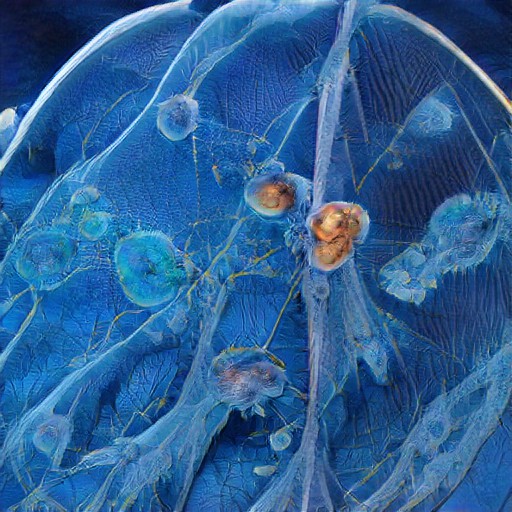Joel Simon's recent work Latent Lineages for AUTOMATA offers a fascinating retrospective on the genealogical networks that emerged from his groundbreaking 2018 tool, Artbreeder. These prints visualize complete genealogical networks of individual images from Artbreeder, the first widely accessible tool for AI image generation that helped launch the contemporary AI art movement. Each node represents a discrete iteration, connected by edges that trace parent-child relationships across thousands of collaborative transformations. The resulting diagrams map both individual creative evolution and the emergence of new artistic methodologies within networked creative systems.
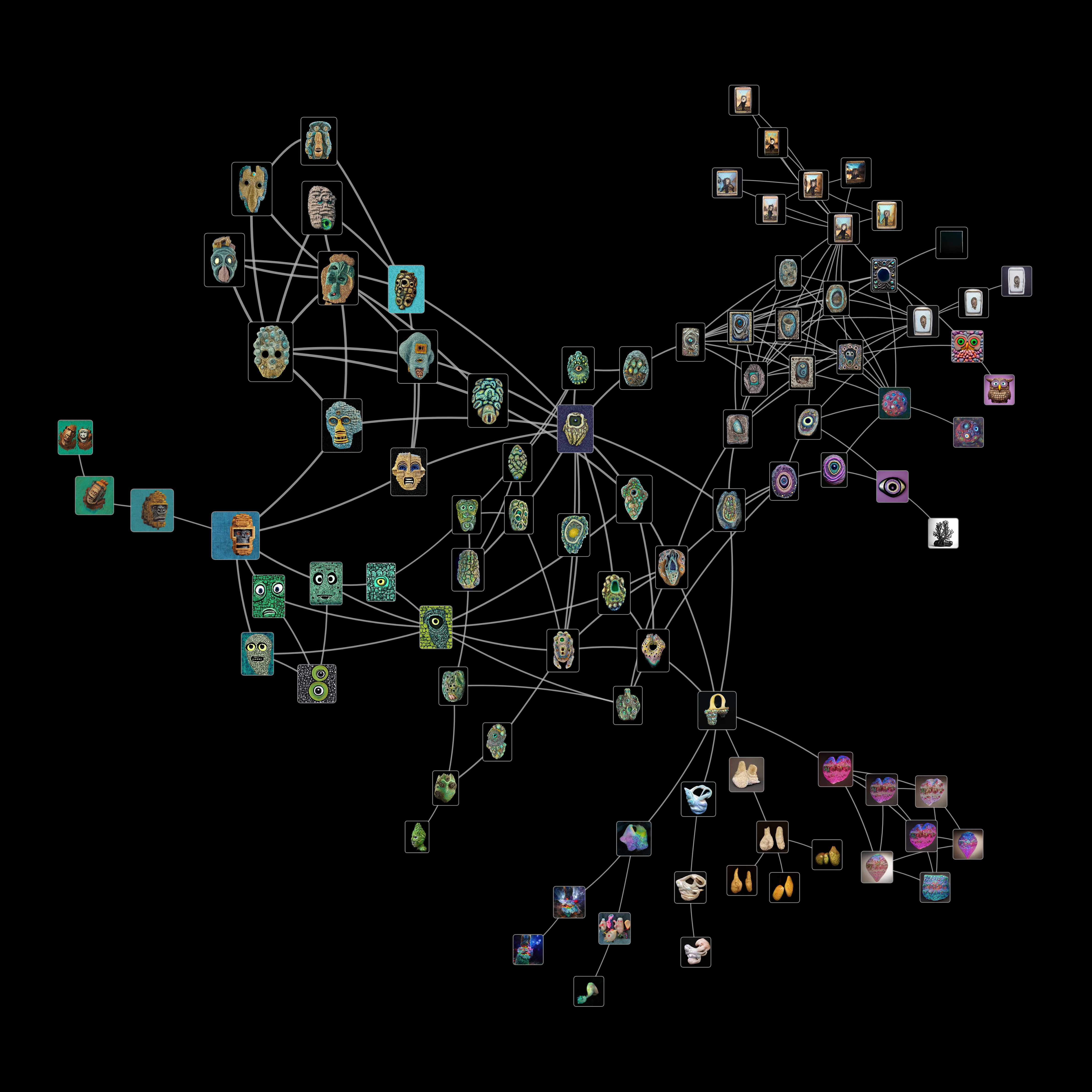
Few artists understand this networked creative evolution better than Jenni Pasanen, whose own artistic practice was fundamentally transformed by her discovery of Artbreeder's General Splicer. In this interview, she reflects on Joel's profound impact on the AI art space and her own creative journey.
AM: How did you first discover Artbreeder, and what drew you to experiment with it as a creative tool? Can you walk me through your early process with Artbreeder?
JP: Through Instagram. I was scrolling my feed and stumbled across a post made by Thor Elias (see post). I immediately went "WOW, what is this?" because I'd never seen textures and light like that before.
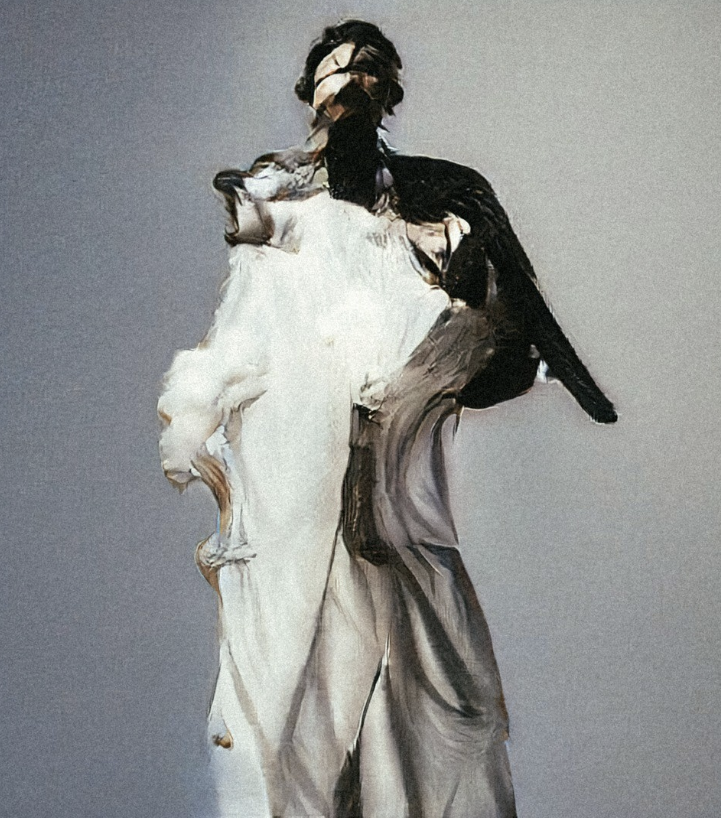
From there I started researching how it was made and found it was created with ArtBreeder (General Splicer). The more I researched, the more I fell in love with the technology and what it could offer creative people. Finding AB also felt like I'd found the missing piece, as I very often start works by creating a texture or abstract shape that works as inspiration. With this tool I was able to create never-before-seen shaped textures with beautiful glitches and light. I completely fell in love.
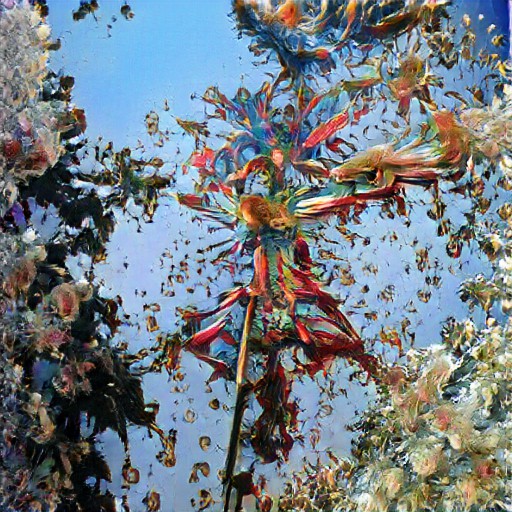
In my very early works using AB, the idea was to create something tangible and figurative out of the generated image that worked as inspiration, and see how much I had to digitally paint or combine different elements to make it resemble something new. So I generated tons and tons of outputs and refined them in the system to get specific soft shapes and luminous/opaque feeling textures, and worked on those as my inspiration. As my craft developed, the generated outputs worked less as the shape but more and more as texture, which is how I use them nowadays.
AM: What was it like learning to "breed" images and work with those slider-based controls?
JP: It took a while to get the hang of, but after you got a handle on it, it was much easier to control, even though you had some control, my favorite part is that you basically don't. The outputs can be something you expect, but very often it's something super unexpected, and I love this randomness. It gives your imagination so much more to work with.
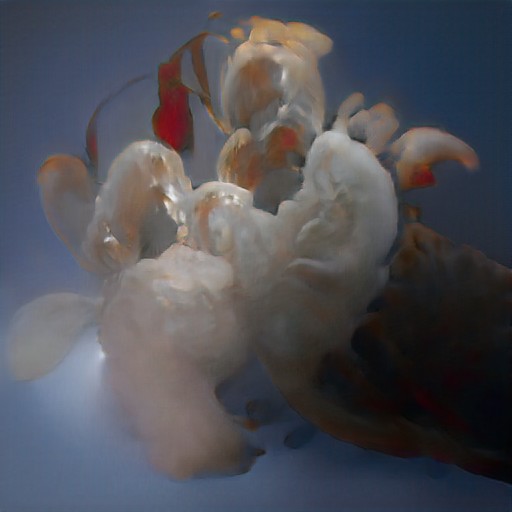
AM: What made Artbreeder uniquely appealing compared to other creative tools you were using at the time? Why did it click for you as an artist?
JP: The textures. Since the General Splicer is trained on CC0 photography, it imitates how light works in reality the right way, but abstracts it. While textures you create with traditional or digital tools stay flat, this touchpoint of light and shadow that the AI is able to create, is something we cannot do, because we are not machines. That is what inspired and struct me it brought so many new possibilities in field of art. I also have a background in 3D, so I know the importance of depth and light. It's basically the core of everything visual.
"With this tool I was able to create never-before-seen shaped textures with beautiful glitches and light. I completely fell in love."
AM: How did working with Artbreeder change or influence your artistic practice and identity? Did it shift how you thought about creativity and authorship?
JP: I think it gave me more inspiration and also this luminous layer to my work, like a dreamlike haze that I wasn't able to achieve through traditional or digital means before. Since I played with the textures and the process for so long, now I can create the same feel and look without AI, just by using photography as texture or shapes. Without GAN, I don't think I would have ever discovered this process of creating, so I think that's the biggest change.
My art otherwise dwells very much in the same world as it always has; multiple hands, fingers, eyes, overlapping elements, etc. For me, I don't want to replicate reality or narrate the world in the state it is; I was never keen on that. I want to visualize stories untold and reveal a world that cannot be seen by the eye of another, only mine, the world between the unseen and the felt.
AM: Looking back, how do you see Artbreeder's role in launching the AI art movement? What impact do you think Joel's tool had on the broader creative community?
JP: In the beginning, 2020–2021, there were only very few online tools, like pix2pix-based ones, Dream Machine, and Google Colab tools. Dream Machine was really popular, but what brought AI in a big way to public attention was ArtBreeder. Even though it was made already in 2017–2018, it really jumped big in 2021–2022. Many artists in this space wouldn't exist at the scale they are today without ArtBreeder, that's a fact. Personally, I'm not sure where I would be myself if I hadn't discovered it and found new techniques with its help. All I know is that I'd still be making art just like I have been doing all my life, maybe digital painting in a different way or with different technique, maybe more animation too? It will be a mystery; creativity leads us.
"Many artists in this space wouldn't exist at the scale they are today without ArtBreeder, that's a fact."
More people should discover Joel's work and have a huge deep dive into it! There's so much more he does than just ArtBreeder, from sculpture to interactive art to tools. He's one of the most generous people I know. He has so much passion for his craft that I can only admire and hype everything he does. So please do go see his website and be in awe of what there is to discover!
